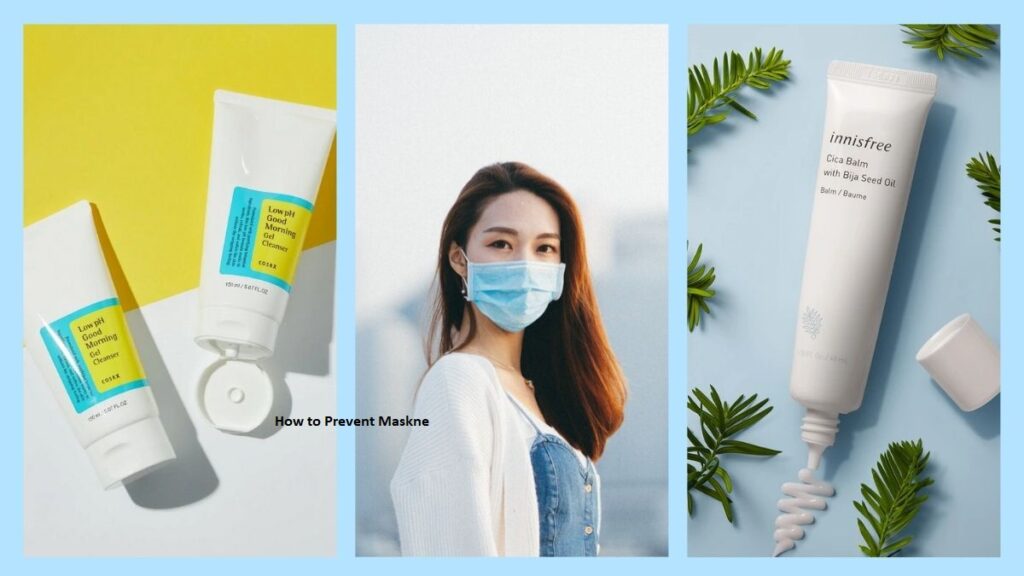Introduction
Masks are now an absolute need in today’s society to prevent the transmission of disease, especially in the wake of the COVID-19 epidemic. While masks are useful at reducing the spread of viruses, they can also result in “maskne,” a common skin condition. The term “maskne,” which combines the words “mask” and “acne,” describes the skin outbreaks that might How to Prevent Maskne happen as a result of often using masks. This article will examine practical methods for preventing and treating acne so that you can keep your skin clear and healthy.
Understanding the Causes of Maskne
It’s important to comprehend the underlying causes of maskne before moving on to prevention. Acne caused by masks is influenced by a number of factors, including:

Friction
Constant friction from the mask How to Prevent Maskne rubbing against your skin can result in discomfort and redness.
Moisture
A mask creates a breeding ground for How to Prevent Maskne bacteria that causes acne by trapping moisture, perspiration, and bacteria against your skin.
Clogged Pores
Oils, sweat, and leftover makeup all have the potential to block pores and cause breakouts.
Lack of Air Circulation
Masks may restrict airflow, which could How to Prevent Maskne interfere with your skin’s ability to naturally breathe and heal.
Preventing Maskne
Now that we know the causes, let’s explore some practical tips to prevent maskne:
Choose the Right Mask
Opt for a mask made of soft, breathable materials like cotton, and ensure it fits snugly but not too tight.
Cleanse Your Face
Start your day with a gentle cleanser to remove any dirt and excess oils. Use a mild, non-comedogenic cleanser.
Moisturize
Apply a lightweight, oil-free moisturizer to create a barrier between your skin and the mask.
Skip Heavy Makeup
Think about going makeup-free or applying few cosmetics on your lower face.
Take Mask Breaks
Whenever it’s safe to do so, take short breaks from wearing your mask to allow your skin to breathe.
Practice Good Hygiene
Regularly wash your reusable masks, and if using disposable ones, change them frequently.
Avoid Touching Your Face
Touching your face can transfer bacteria from your hands to your skin, exacerbating maskne.
Managing Maskne
If you’re already dealing with maskne, here are some steps to manage it effectively:
Use a Gentle Cleanser
Wash your face twice a day with a gentle, non-drying cleanser to prevent further irritation.
Topical Treatments How to Prevent Maskne
Consider using over-the-counter acne treatments containing ingredients like benzoyl peroxide or salicylic acid.
Moisturize

Keep applying a mild moisturizer to stop your skin from drying out.
Avoid Squeezing
Resist the urge to squeeze or pick at your acne, as this can lead to scarring.
Consult a Dermatologist
If your maskne persists or worsens, seek professional advice from a dermatologist.
Conclusion
Our new normal can have the bothersome side effect of maskne, but you can avoid it with the correct skincare practices and preventative steps. Always remember to pick the proper mask for your skin type, practice excellent cleanliness, and follow a skincare How to Prevent Maskne routine. You may have clear, healthy skin by following these instructions, even when using a mask.
FAQs
- Can maskne be completely prevented?
While it may not be entirely preventable, following good skincare practices can significantly reduce the risk of developing maskne.
- What type of moisturizer should I use to prevent maskne?
Opt for a lightweight, non-comedogenic moisturizer that won’t clog your pores.
- How often should I change my disposable mask?
It’s best to change your disposable mask every four hours or when it becomes visibly soiled.



